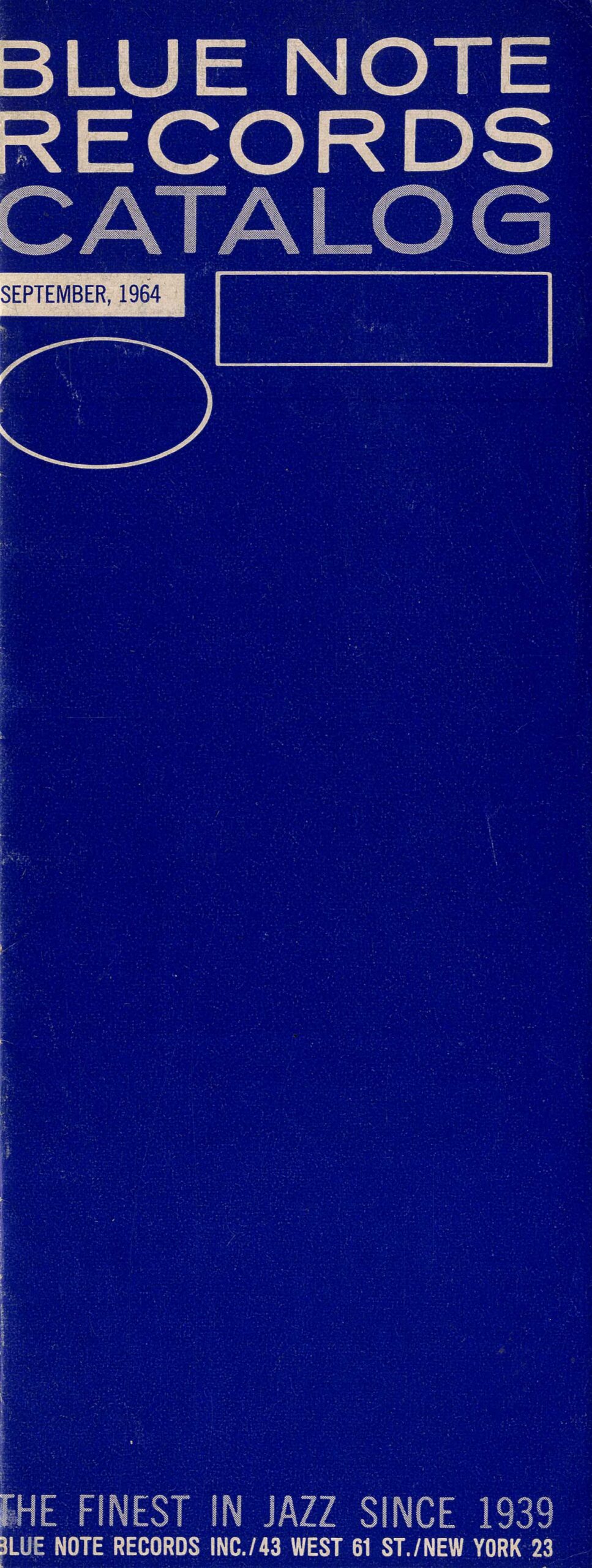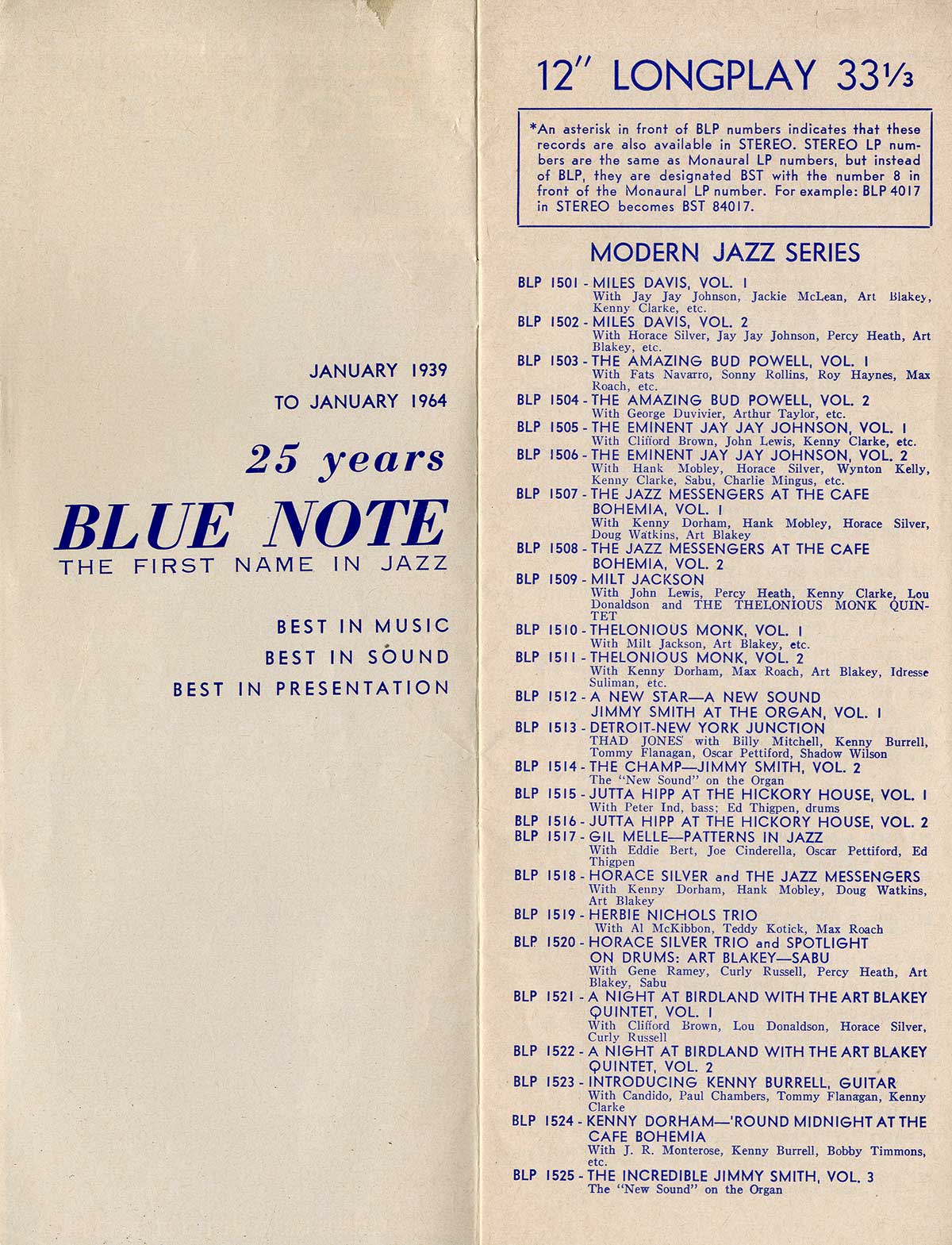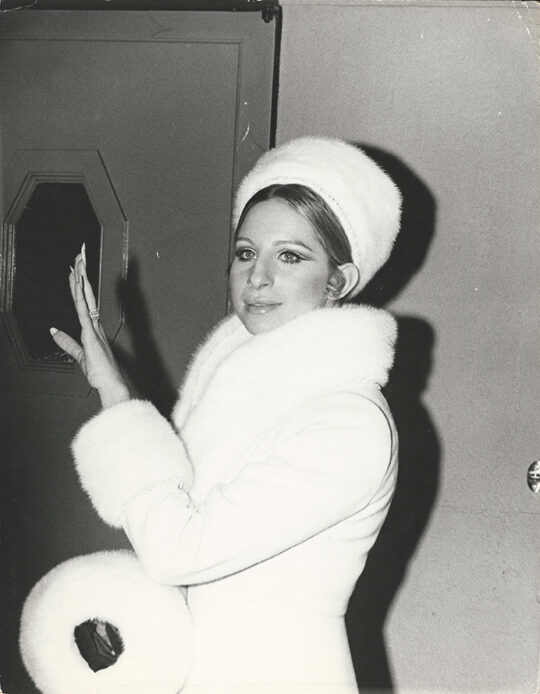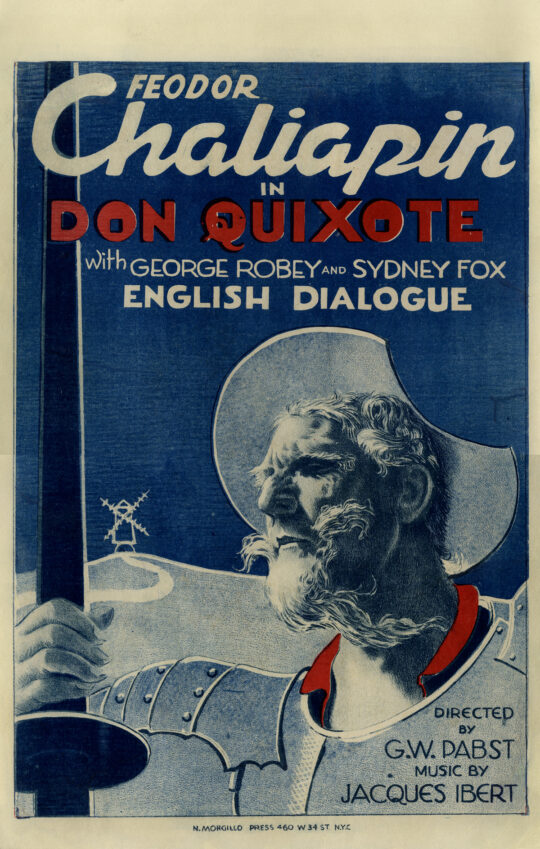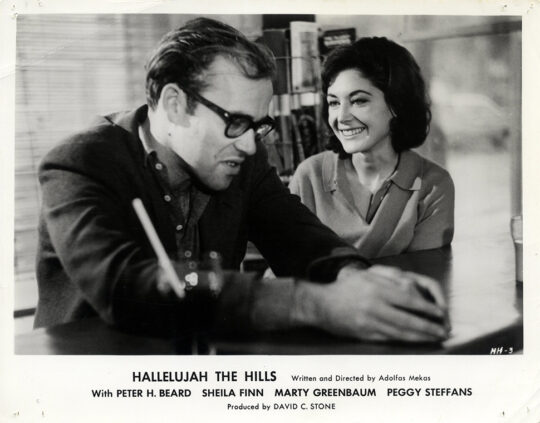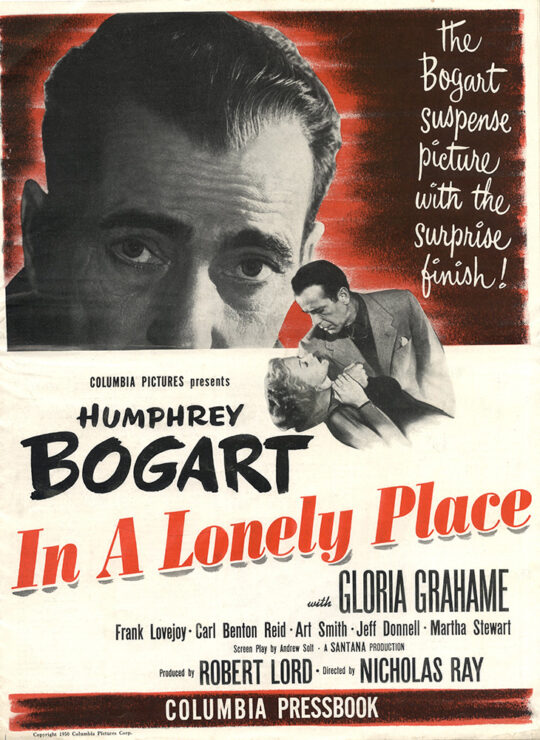Blue Note Records BLUE NOTE RECORDS CATALOG September, 1964
New York: Blue Note Records, 1964. Printed wrappers, [24] pp., light rubbing and edge wear with a tiny spot of loss at the top right corner, NEAR FINE. A complete catalog of Blue Note Records LPs and 45 rpm records for this groundbreaking label which highlighted so many important African American jazz musicians.
“In 1951, Blue Note issued their first vinyl 10″ releases. The label was soon recording emerging talent such as Horace Silver (who would stay with Blue Note for a quarter of a century) and Clifford Brown. Meanwhile, Milt Jackson (as the leader of what became the Modern Jazz Quartet) and the Jazz Messengers (originally organised as a cooperative, but soon to become Art Blakey’s group) recorded for Blue Note. The Milt Jackson Quartet session was a one-off, but Blakey’s various groups recorded for the label extensively, if intermittently, for the next decade. Rudy Van Gelder recorded most Blue Note releases from 1953, after Lion and Van Gelder’s mutual friend, saxophonist and composer Gil Melle, introduced them. A difference between Blue Note and other independent labels (for example Prestige Records, who also employed Van Gelder) was that musicians were paid for rehearsal time prior to the recording session: this helped ensure a better end result on the record. Producer Bob Porter of Prestige Records once said that ‘the difference between Blue Note and Prestige is two days’ rehearsal. ‘ When the recording industry switched to 12″ LP in the mid-1950s, Blue Note was in difficulties. Their catalog on the now outmoded 10″ LP now had to be recreated on the newer format. Lion contemplated selling out to Atlantic at this time, an option which was not acted upon. A musician who was to become one of the label’s best sellers was discovered. Jimmy Smith, the Hammond organist, was signed in 1956 and performed on the label’s first 12” LP album of new recordings.
“The mid to late 1950s saw debut recordings for Blue Note by (among others) Hank Mobley, Lee Morgan, Herbie Nichols, Sonny Clark, Kenny Dorham, Kenny Burrell, Jackie McLean, Donald Byrd and Lou Donaldson. Sonny Rollins recorded for the label in 1956 and 1957 and Bud Powell briefly returned. John Coltrane’s Blue Train, and Cannonball Adderley’s Somethin’ Else (featuring Miles Davis in one of his last supporting roles) were guest appearances on the label. Blue Note was by then recording a mixture of established acts (Rollins, Adderley) and artists who in some cases had recorded before, but often produced performances for the label which by far exceeded earlier recordings in quality (Blue Train is often considered to be the first significant recording by Coltrane as a leader). Horace Silver and Art Blakey and the Jazz Messengers continued to release a series of artistically and commercially successful recordings.
“The early 1960s saw Dexter Gordon join the label. Gordon was a saxophonist from the bebop era who had spent several years in prison for narcotic offences, and he made several albums for Blue Note over a five-year period, including several at the beginning of his sojourn in Europe. Gordon also appeared on the debut album by Herbie Hancock – by the mid 1960s, all four of the younger members of the Miles Davis quintet (Hancock, Wayne Shorter, Ron Carter and Tony Williams) were recording for the label, and Hancock and Shorter in particular produced a succession of superb albums in a mix of styles. Carter did not actually record under his own name until the label’s revival in the 1980s, but played double bass on many other musicians’ sessions. Many of these also included Freddie Hubbard, a trumpeter who also recorded for the label as a leader. One of the features of the label during this period was a “family” of musicians (Hubbard, Hancock, Carter, Grant Green, Joe Henderson, Kenny Dorham, Lee Morgan, Blue Mitchell, Hank Mobley and many others) who would record as sidemen on each other’s albums without necessarily being part of the leader’s working group.” (Wikipedia)
Out of stock

